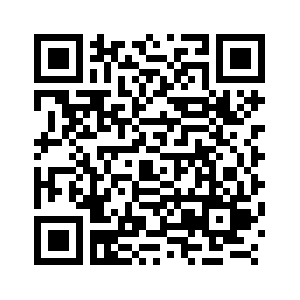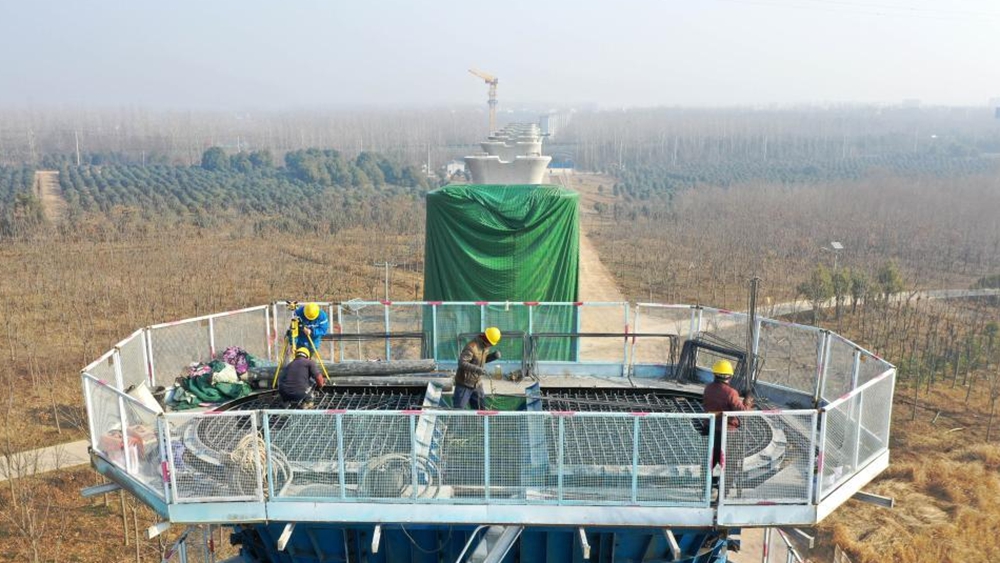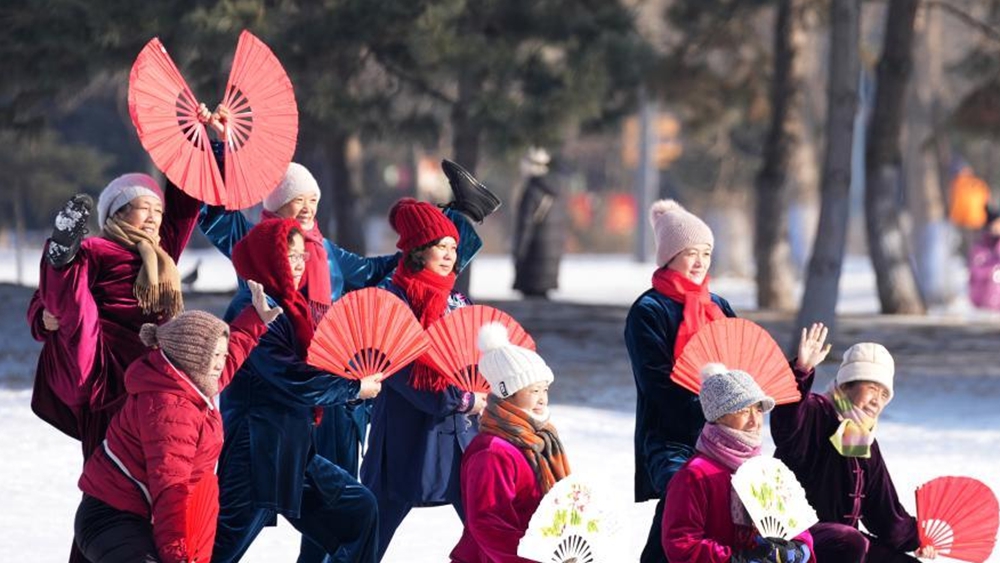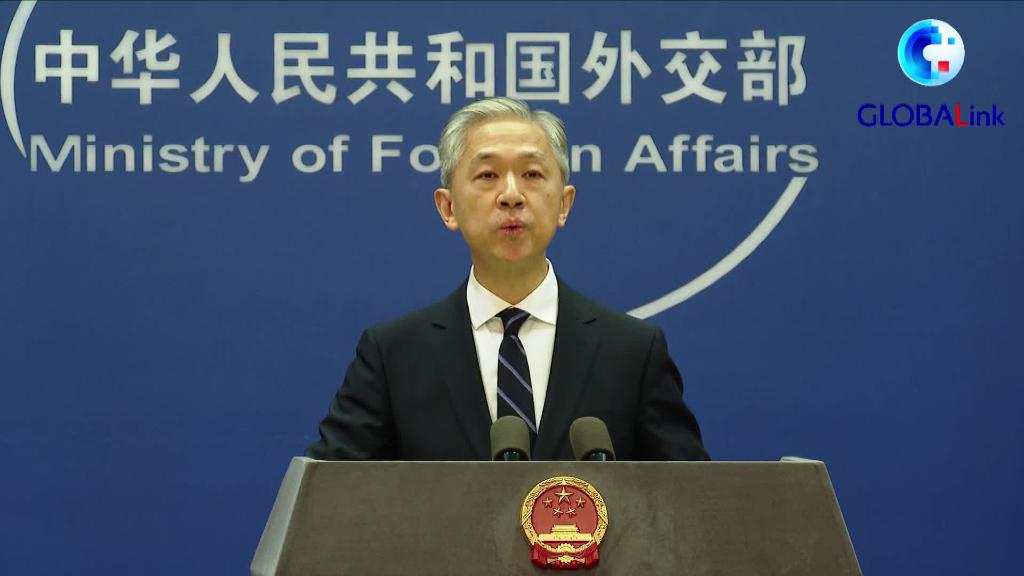Video: The United States shattered a single-day record with over 1 million COVID-19 cases on Monday amid the rapid spread of the Omicron variant, according to data from Johns Hopkins University. (Xinhua)
The demand for coronavirus tests has exploded as Americans returned from their holiday travel, but the Joe Biden administration is still scrambling to make half-a-billion tests it promised quickly available, The Washington Post reported.
NEW YORK, Jan. 5 (Xinhua) -- Medical and testing needs have surpassed what the government and the country could provide, and colleges and schools have chosen to resume online education or even call off classes at all, amid the latest dramatic surge of COVID-19 in the United States.
More than 103,000 Americans were hospitalized with COVID-19 on Monday in the United States, according to data from the Centers for Disease Control and Prevention (CDC), the highest number since late summer when the Delta variant triggered a nationwide rise in cases.
Also on Monday, the country shattered a single-day record with over 1 million COVID-19 cases amid the rapid spread of the Omicron variant and government decisions to ease prevention and control measures.
DEMAND EXPLOSION
The demand for coronavirus tests has exploded as Americans returned from their holiday travel, but the Joe Biden administration is still scrambling to make half-a-billion tests it promised quickly available, reported The Washington Post (WP) on Wednesday.
White House officials said the plan would begin delivering the tests this month, but there are a slew of unanswered questions and logistical hurdles the administration needs to hammer out as it works to stand up the program.
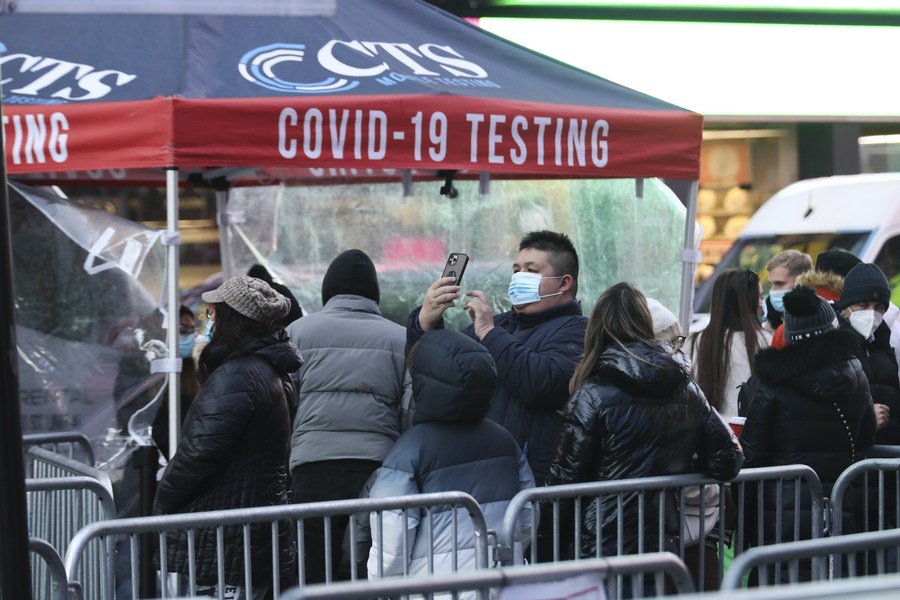
People wait in line at a COVID-19 testing site on Times Square in New York, the United States, Jan. 4, 2022.(Xinhua/Wang Ying)
That includes critical details like creating a new government website and determining how many tests each person can get. "The administration is under fire for testing crunch," said the report.
"We need these tests produced quickly, and we need to get them out to people quickly," said Lori Tremmel Freeman, CEO of the National Association of County and City Health Officials (NACCHO), predicting Omicron could soon reach its peak.
VACCINATION URGE
U.S. President Joe Biden once again urged the 35 million American adults who had not vaccinated to get a shot, saying unvaccinated people were taking up hospital beds and crowding emergency rooms and intensive care units that others needed.
"If you're unvaccinated, you have some reason to be alarmed," he said, adding some people would become seriously ill and needlessly die. "We have in hand all the vaccines we need to get every American fully vaccinated, including the booster shot."
"So, there is no excuse - no excuse for anyone being unvaccinated," he said from the White House on Tuesday, noting that the number of unvaccinated adult Americans had fallen to 35 million from 90 million in the last six months.
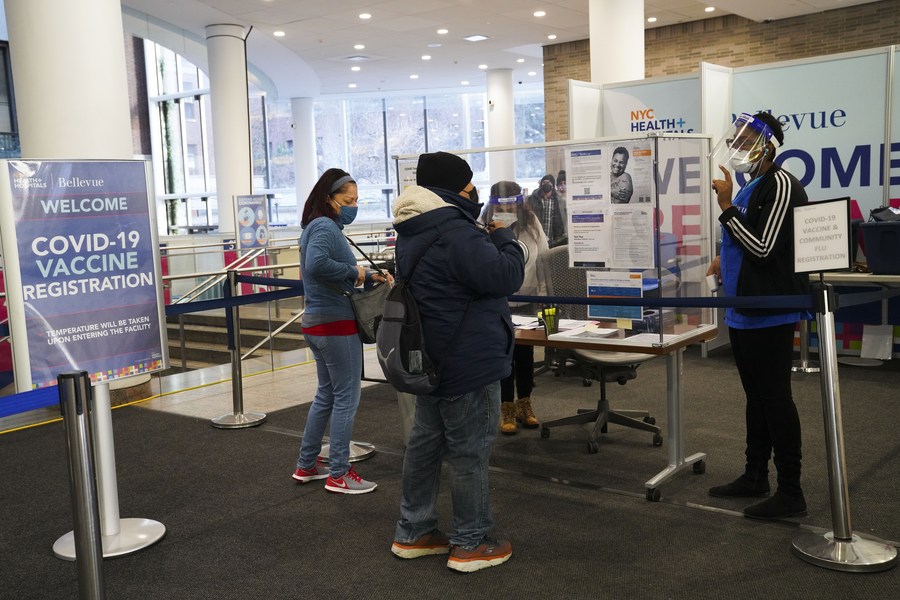
People register to receive COVID-19 vaccine at a hospital in New York, the United States, Dec. 13, 2021. (Xinhua/Wang Ying)
In what could be one of the final steps before boosters are made available to younger adolescents, vaccine experts advising the CDC are due Wednesday to consider if 12-to-15-year-olds should gain access to them for the first time.
COLLEGE SCRAMBLE
Thousands of U.S. college students ended 2021 and begin 2022 in isolation and quarantine as the Omicron variant surges. For school administrators, the sudden outbreaks have sparked logistical scrambles to get students swiftly and safely housed away from others.
"Some of the first warning signs that the pandemic had changed, again, were on university campuses: Cases spiked last month and many colleges announced they would hold finals online, extend the winter break, or resume classes virtually," reported WP.
In some cases those decisions were driven by the limitations on housing available to separate infected and potentially exposed students from others on campus -- the virus was spreading so rapidly that models predicted broadening waves of exposures.
When asymptomatic people infected with coronavirus were allowed to isolate for five days, rather than 10, school leaders responded with a mix of relief, concern and uncertainty. Many were seeing mild, moderate or asymptomatic cases, but in unexpectedly large numbers.
CHICAGO CALL-OFF
Public school officials in Chicago canceled classes for Wednesday amid a clash with the teachers' union, whose members had threatened to stay home in a bid to force instruction online during a coronavirus surge, The New York Times reported.
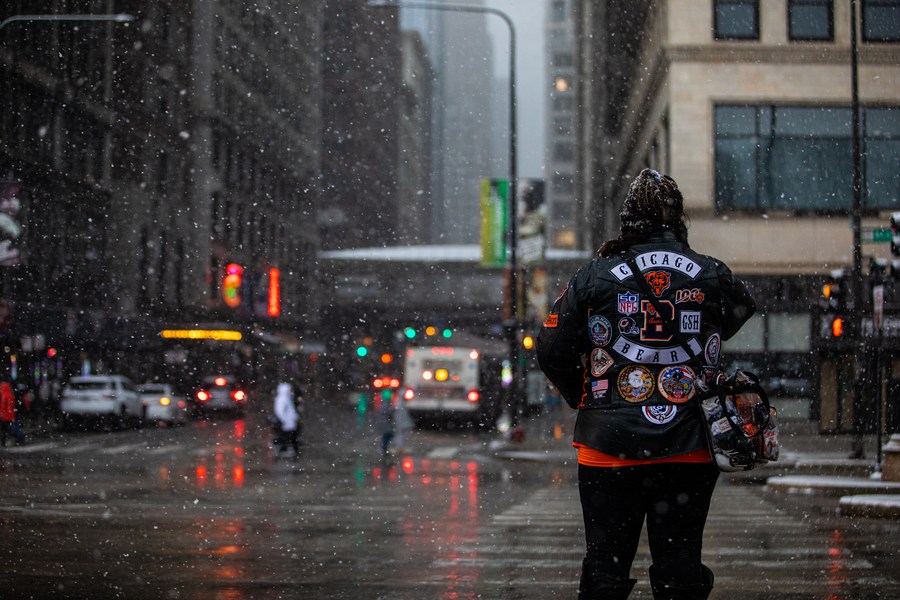
A woman waits to cross Michigan Ave in downtown Chicago, the United States, Jan. 1, 2022. (Photo by Vincent D. Johnson/Xinhua)
Union members had criticized the district's response to the Omicron variant, which has pushed cases in the city to record levels, and said conditions in classrooms were unsafe. The Chicago Teachers Union said late Tuesday night that 73 percent of members who voted favored pausing in-person instruction.
However, Mayor Lori Lightfoot said reverting to online schooling was unacceptable and unnecessary, and her administration decided to call off class altogether -- keeping the buildings open for emergency child care -- rather than return to virtual instruction.
"Nobody signs up for being a home-schooler at the last minute," Lightfoot said. "We can't forget about how disruptive that remote process is to individual parents who have to work, who can't afford the luxury of staying home." ■
